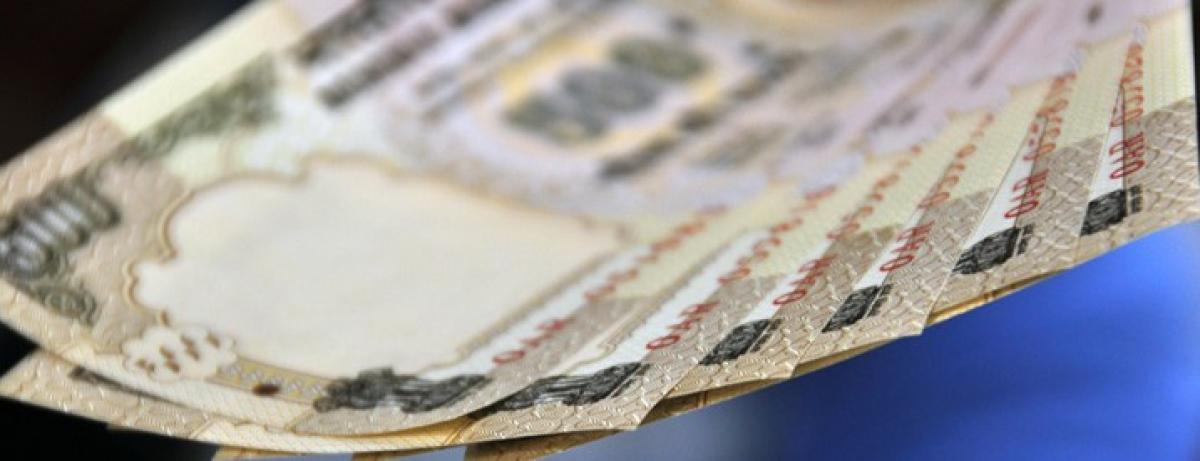Live
- Karnataka Reviews Lake Safety Ahead of Monsoon: Minister Bhosaraju Tells Upper House
- Udupi MP’s queries, More key highways on high-priority
- Investing in Skills: Education Loans Paving the Way for Career Success
- Ghaggar river’s two stretches identified as polluted: Govt
- ICC chief Jay Shah meets Brisbane 2032 Olympics organising committee CEO
- Oxford Grammar High School Celebrates 44th Annual Sports Day with Grandeur
- Indian banking sector’s health remains robust, govt policy working very well: Top bankers
- iOS 18.2 Unveiled: New Features with ChatGPT Integration Revolutionize Your iPhone
- 'Run for Viksit Rajasthan' to be annual event, says CM Sharma
- Nitish Kumar launches '109 free medicine vehicles' in Patna
Just In

x
Highlights
With an average annual outflow of $51.03 billion, India is the fourth biggest exporter of illicit capital over a decade with such financial flows surging to $1.1 trillion in 2013, according to a new report.

Washington: With an average annual outflow of $51.03 billion, India is the fourth biggest exporter of illicit capital over a decade with such financial flows surging to $1.1 trillion in 2013, according to a new report.
China, with $139.23 billion average annually ($1.39 trillion cumulative), was the biggest exporter of illicit financial flows from developing and emerging economies, according to a study released Wednesday by Global Financial Integrity (GFI), a Washington-based research and advisory organization.
Russia with $104.98 billion average ($1.05trillion cumulative) and Mexico with $52.84 billion average ($528.44 billion cumulative) came next. India with $51.03 billion average ($510.29 billion cumulative) was fourth followed by Malaysia with $41.85 billion average annually ($418.54 billion cumulative) ranked fifth.
Authored by GFI Chief Economist Dev Kar and GFI Junior Economist Joseph Spanjers, the report pegs cumulative illicit outflows from developing economies at $7.8 trillion between 2004 and 2013, the last year for which data are available.
Titled "Illicit Financial Flows from Developing Countries: 2004-2013" the study reveals that illicit financial flows first surpassed $1 trillion in 2011, and have grown to $1.1 trillion in 2013. This marks a dramatic increase from 2004, when illicit outflows totaled just $465.3 billion.
"This study clearly demonstrates that illicit financial flows are the most damaging economic problem faced by the world's developing and emerging economies," said GFI President Raymond Baker, a longtime authority on financial crime.
"This year at the UN, the mantra of 'trillions not billions' was continuously used to indicate the amount of funds needed to reach the Sustainable Development Goals. Significantly curtailing illicit flows is central to that effort."
Illicit financial flows averaged a staggering four percent of the developing world's GDP, the study noted. In seven of the 10 years studied, global IFFs outpaced the total value of all foreign aid and foreign direct investment flowing into poor nations.
The IFF growth rate from 2004-2013 was 8.6 percent in Asia and 7 percent in Developing Europe as well as in the MENA and Asia-Pacific regions, the report found. The report recommends that world leaders focus on curbing opacity in the global financial system, which facilitates these outflows.
Specifically, GFI suggested that governments establish public registries of verified beneficial ownership information on all legal entities, and all banks should know the true beneficial owner(s) of any account opened in their financial institution.
Government authorities should adopt and fully implement all of the Financial Action Task Force's (FATF) anti-money laundering recommendations; laws already in place should be strongly enforced. Policymakers should require multinational companies to publicly disclose their revenues, profits, losses, sales, taxes paid, subsidiaries, and staff levels on a country-by-country basis.
All countries should actively participate in the worldwide movement towards the automatic exchange of tax information as endorsed by the OECD and the G20, the report suggested.

Next Story
More Stories
ADVERTISEMENT
© 2024 Hyderabad Media House Limited/The Hans India. All rights reserved. Powered by hocalwire.com







